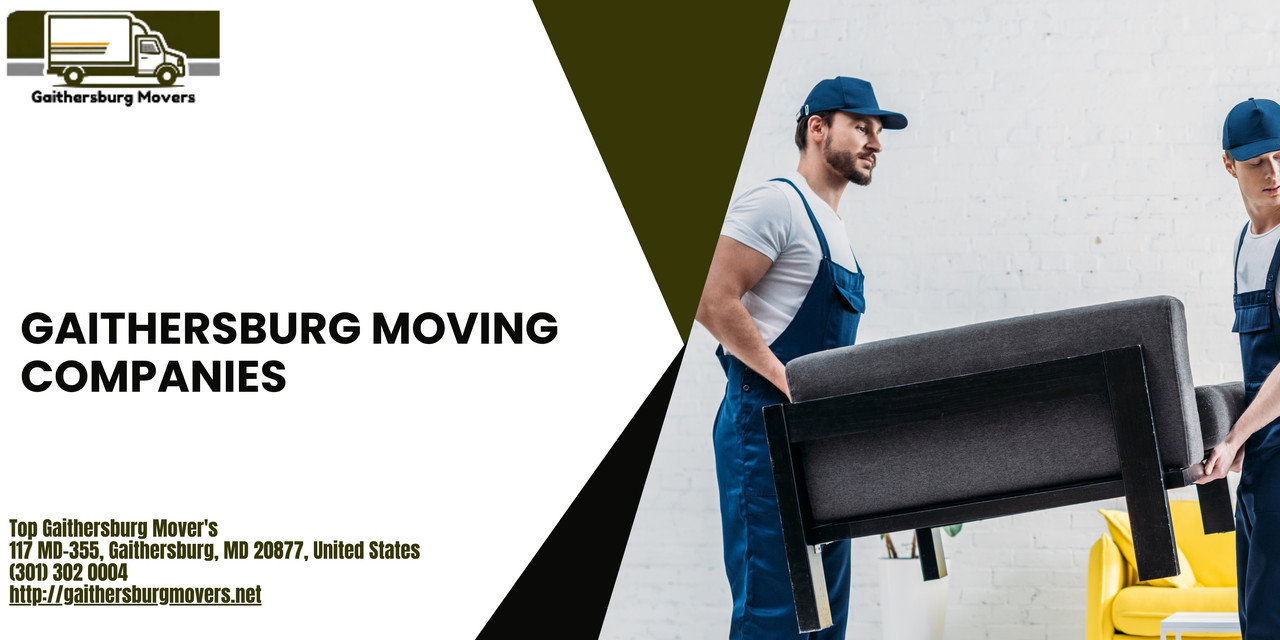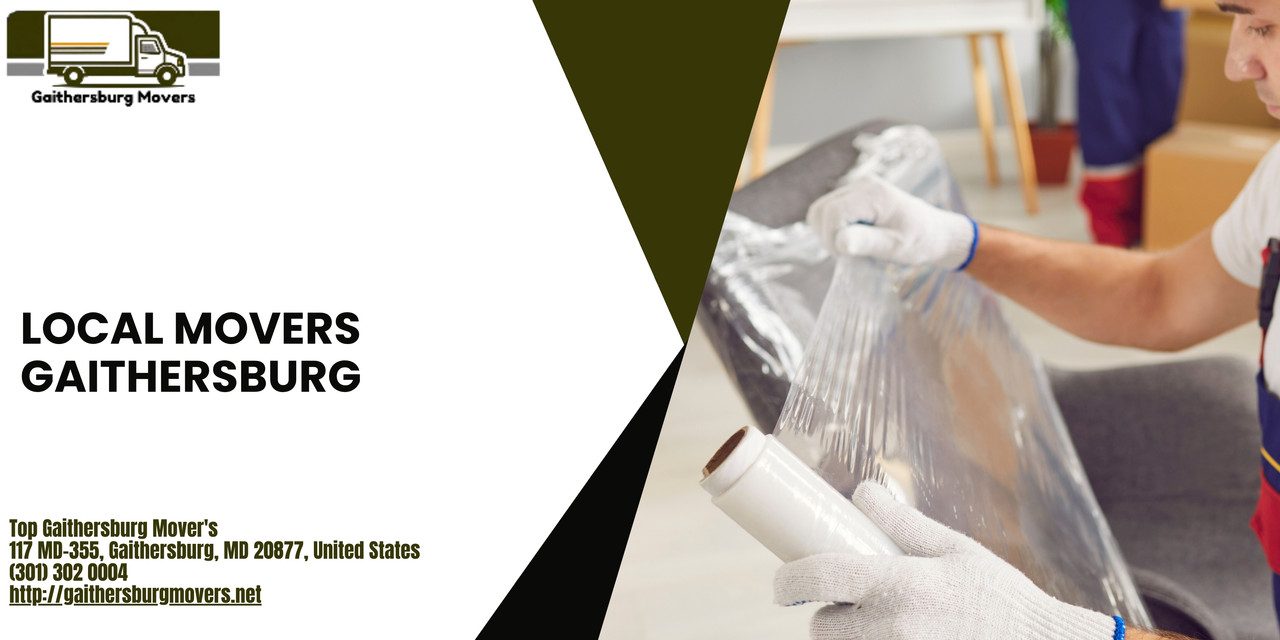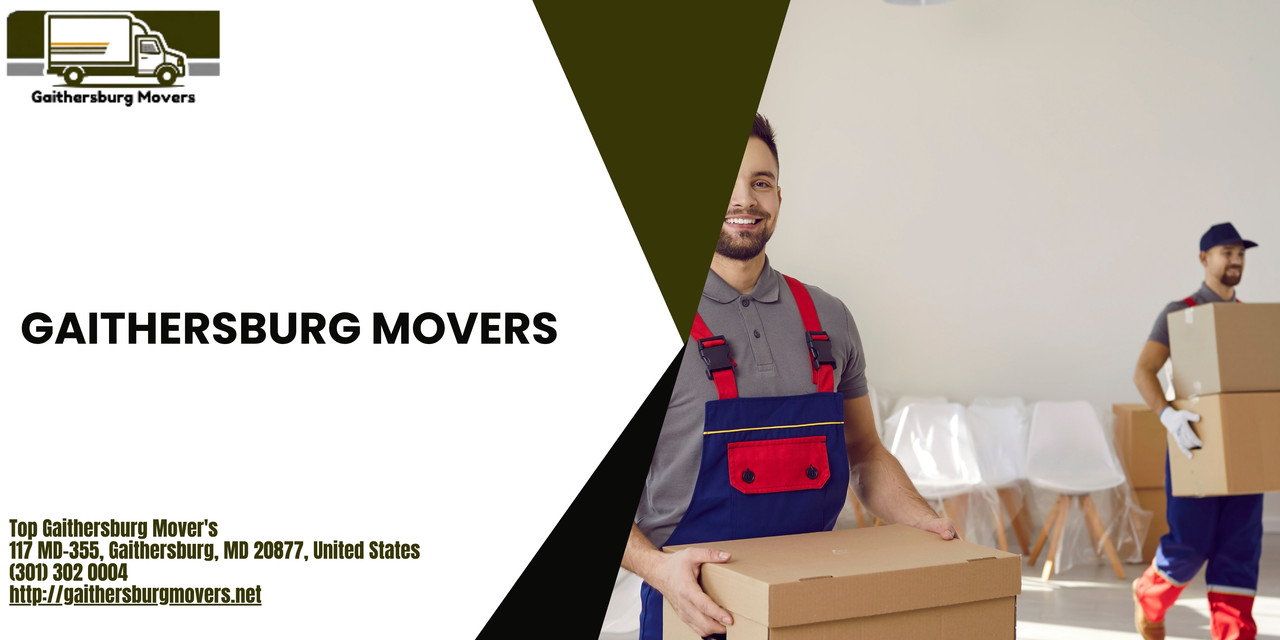Relocating an office in Gaithersburg has its own rhythm. The I-270 corridor can feel like a conveyor belt at 8 a.m., downtown loading zones have strict windows, and many buildings share freight elevators with biotech labs that cannot tolerate delays or dust. The difference between a stressful move and a quiet Monday restart often comes down to planning, the right partner, and discipline around details that are easy to overlook when you are juggling lease negotiations and IT cutover schedules.
I have managed moves for scrappy 12-person teams in flex Top Gaithersburg Mover's Office moving companies Gaithersburg space and for a 300-seat floor plate with a live trading desk. The playbook changes with headcount, but the fundamentals hold: sequence your decisions, vet your vendors, and protect the business clock. Below, I lay out how to navigate office moving companies in Gaithersburg, when to lean on local expertise versus long haul capacity, what to demand in your scope, and where corporate relocations tend to stumble.
Why Gaithersburg-specific experience matters
Montgomery County is not a generic market. Many Class A and Class B buildings require certificates of insurance with named endorsements and have strict move windows on evenings or weekends. Some campuses in the biotech belt demand clean-move protocols and prohibit certain packing materials. If your mover has never worked in Kentlands, the Quince Orchard corridor, or near NIST, you will end up being their learning curve.
Local movers in Gaithersburg know which buildings require pre-reserved dock time, how to wrangle elevator keys, and when to bring masonite, neoprene wraps, and corrugate that meets building standards. A mover who can say, “We moved three tenants out of this building in the last year,” will save your facilities team hours of back-and-forth. This is one reason companies prefer Office moving companies in Gaithersburg that can produce a building-specific move plan, not just a generic checklist.
Scoping the move: inventory and business continuity
Your first job is to decide what must move, what can be decommissioned, and what needs to be operational on day one. An accurate inventory shapes everything: truck count, labor hours, crate quantity, and IT cutover milestones.
Start with a walk-through that measures more than square footage. Tag items into categories: workstations, height-adjustable desks that need disassembly, conference room AV, specialty equipment like lab freezers or large-format printers, and items with chain-of-custody requirements. Assign a move criticality score. Finance may insist that AP scanners be live by Monday noon, while HR’s archive can stage for two days.
Good office moving companies will produce a room-by-room inventory, then ask uncomfortable questions. They will want to know which team handles data destruction, who signs off on e-waste manifests, and whether your landlord requires a broom-clean condition or full decommissioning with patch-and-paint. A vendor who does not push on these points is signaling they intend to move objects, not outcomes.
Choosing the right mover: local, long distance, or both
Corporate relocations come in flavors. If you are shuffling across Gaithersburg or into Rockville or Bethesda, local movers in Gaithersburg are ideal. They understand traffic patterns, can stage crates over several days, and can return for small follow-up pulls without minimums that crush your budget. If you are consolidating offices from out of state into Gaithersburg or vacating for a move to Northern Virginia or the Baltimore corridor, long distance movers in Gaithersburg offer linehaul capacity, warehouse options, and the DOT compliance you need.
Price-sensitive projects look for cheap movers in Gaithersburg, and there is nothing wrong with wanting a sharp number. Just be clear on trade-offs. A lower hourly rate paired with a two-day delay when a single truck has a breakdown can cost far more than the difference in wages. I have seen “cheap” move days balloon when understaffed crews need to return a second day to finish, triggering after-hours building fees. A smart approach is to separate tasks: use an economical crew for packing non-critical contents, but hire a seasoned team for server racks, lab instruments, or high-value art.
Budgeting with eyes open
Corporate move budgets rarely fail because of the big line items. They wobble on the edges: after-hours load-in fees, dock overtime, parking permits, union labor requirements in certain buildings, and crate losses. Ask for a not-to-exceed estimate with assumptions documented in plain language. If the mover expects four movers and one truck for eight hours, what happens if the freight elevator fails for an hour? If you need weekend work, what are the premiums? If building management requires union operators for dock control, who pays?
I like to buffer 10 to 15 percent for contingencies on mid-size moves and up to 20 percent when specialized equipment or tight windows are involved. This keeps procurement realistic and prevents last-minute approvals under duress. For recurring moves, some companies set up a master services agreement with rate cards, which saves time and helps with forecasting.
The timeline that keeps you out of trouble
Moves fall apart when decisions crowd the last two weeks. A practical schedule for a small to mid-size office looks like this: three months out, decide what to relocate versus decommission. Eight to ten weeks out, select your mover and lock dates with building management. Six weeks out, begin crate deliveries and labeling protocols. Four weeks out, finalize IT cutover and test your new site’s infrastructure. The final week is for packing personal items, anchoring high-value moves, and staging a soft landing: snacks, cleaning wipes, a floor map that actually makes sense.
On larger moves, adding a swing space plan saves the day. If your new site is in Gaithersburg and the outgoing lease ends on a Thursday, the ability to stage in a temporary warehouse over that weekend provides breathing room. Some Office moving companies in Gaithersburg offer short-term storage, which is valuable when furniture lead times slip or when subtenants leave behind surprises you cannot sort under deadline.
IT, data, and the gear that bites back
IT is usually the critical path. If your move plan treats technology as “stuff,” expect surprises. Structured cabling must be certified before move day, and the new site’s network closet needs power, cooling, and security that match your risk profile. Printers, plotters, and lab gear have long tail dependencies: drivers, calibration, and vendor support windows.
Many movers offer IT disconnect and reconnect services. These teams photograph each desk setup, label cables, and rebuild workstations precisely. It sounds simple until you hit a floor with mixed docking stations and monitor arms that require different VESA plates. Ask your mover for a sample label set and a desk-by-desk reconnection plan. If they do not insist on power-on testing before they leave, push back. I have seen 200 monitors light up and three remain dark, which is still three frustrated managers on Monday.
Chain of custody matters for devices holding sensitive data. If you are in healthcare, finance, or biotech, build a documented handoff with serial numbers, sealed containers, and signatures at each stage. For servers, investigate whether you can mirror services and cut over during a maintenance window rather than moving live gear. The cost of a four-hour outage dwarfs the premium for a smoother transition.
Furniture strategy: reuse, refurbish, or replace
Furniture drives the most visible costs and headaches. Many companies try to reuse existing workstations and find that panel heights and electrical runs do not match the new plan. Others order new systems with eight-week lead times, then scramble for loaner desks when timelines slip. There is no one right answer. For companies on a tight budget, a hybrid approach works: reuse high-quality task chairs and meeting tables, replace beat-up workstations with a clean benching system, and source gently used items from local vendors to bridge gaps.
Gaithersburg has access to refurbishers who can clean, reupholster, and refinish. If you go this route, involve your mover early. Disassembly requires the correct tools and parts bins. On site, insist on a foreman who has built your specific workstation line before. A crew learning a system yields wobbly results and lost time.
The human factor: communicating with your team
Even the best-run moves are disruptive. People worry about commute changes, parking, light levels, and their favorite coffee spot. You win goodwill by sharing the floor plan, a seating chart, and answers to practical questions early. If you provide crates and labels, give a five-minute video or a one-page guide that shows what a well-packed desk looks like, what not to pack, and when crates will be collected.
Two small practices save hours during unpacking. First, color-code labels by department and zone so movers can place crates quickly. Second, print large, legible placards for each desk with the employee name, team, and any special notes like “dual 27-inch monitors, arm mount.” The fewer ad hoc questions your movers have to ask on the floor, the faster they work and the fewer mistakes they make.
Building management: friends, not gatekeepers
Your building manager can either grease the rails or turn move day into a maze. Loop them in early with a clean document packet: certificate of insurance from your mover listing all entities required by the building, a move schedule with start and end times, a list of heavy or oversized items, and a plan for protecting floors, walls, and elevators. Ask about rules for noise, dock reservations, and loading area length limits. Some Gaithersburg properties share docks with retail, which creates awkward windows when trucks cannot block entries.
Establish a single point of contact for the move on both sides. This person should be reachable on mobile and empowered to make decisions. Share a photo of the foreman so security recognizes them immediately. I still carry a roll of blue painter’s tape on move day for quick signposting to elevators, docks, and staging areas. Facilities staff appreciate a team that arrives with floor protection, corner guards, and an attitude of stewardship.
Special items: labs, safes, and the oddities
Gaithersburg’s business mix includes labs and tech shops with sensitive gear. If you are moving cold storage, check compressor lock-downs and dry ice replenishment. Certain freezers require nitrogen purge protocols in transit. Calibrate instruments at the new site and schedule OEM technicians to stand by if equipment is mission-critical.

Safes, fire files, and server racks require rated equipment and trained crews. Ask for evidence of previous similar moves and the rigging plan, including stair carries if elevators are too small. If you have art or artifacts, request a fine-arts pack with soft wraps, corner protectors, and climate considerations. These services cost more but reduce the risk of an insurance claim that eats time and morale.
Insurance and risk: paperwork that earns its keep
Most office moving companies carry general liability, auto liability, and cargo insurance. Confirm limits meet your building’s requirements, often at least 1 to 2 million per occurrence. For high-value items, consider a rider that names specific assets and their declared value. Valuation is not insurance, and many moves default to weight-based coverage that will not replace a damaged server or custom conference table. Spell out who handles claims and by when. A mover who documents condition with photos before and after gives you a baseline and faster resolutions.
If you are downsizing, you also need evidence of proper disposal. E-waste should flow through certified recyclers who provide manifests. Furniture donated to nonprofits may come with receipts useful for accounting. Landlords sometimes require proof of decommissioning to release security deposits, so keep your paperwork tidy.
What “good” looks like on move day
There is a feeling on a well-run move day: crews arrive early, the foreman checks in with building security, floor protection goes down fast, and the first carts roll out within 30 minutes. Labeled crates land in the right zones, and the IT team moves in a quiet loop plugging and testing. The facilities lead is not firefighting because the prework did its job. Problems still pop up, but they get solved without drama because everyone knows who makes decisions and where to route questions.
I like to hold a 10-minute standup with the mover’s foreman and building management at the start and mid-shift. Quick updates catch small issues before they snowball: a missing elevator key, a jammed loading dock, or a workstation run that is short on hardware. Keep water and basic snacks on hand. Crews that feel seen work better, and your day will go faster when people have the energy to finish strong.
Aftercare: the week that proves the plan
The job is not finished when the last truck pulls away. Plan a punch-list visit two to three days later for touch-ups, crate pickup, and any rehangs or furniture adjustments. Keep a simple ticketing method for employees to report issues with their workspace. A 24 to 48-hour Service Level Agreement for quick fixes keeps grumbles off your plate and helps managers settle their teams.

Debrief with your mover within a week. What went right, what dragged, and how to handle the next phase if you are staging the move. Capture lessons in a short document with vendor contacts, serial numbers for key gear, and as-built floor plans. You will thank yourself the next time someone asks when the second-floor huddle room got its extra whiteboard.

Working across move types: apartments, swing spaces, and hybrid needs
Not every corporate move is a single hop from Office A to Office B. Growing companies sometimes use temporary housing for staff or convert apartments to short-term project spaces. In these cases, Gaithersburg apartment movers can be useful allies. They navigate residential buildings’ rules, quiet hours, and elevators as deftly as office crews handle freight docks. If you are relocating interns or out-of-town contractors, a mover with both commercial and residential experience smooths the logistics.
For multi-site consolidations, long distance movers in Gaithersburg help synchronize deliveries from several origins into a single, well-sequenced inbound schedule. They can hold shipments in climate-controlled storage and release by floor or department. Tight coordination between linehaul and local delivery teams prevents docks from clogging and keeps your timeline intact.
Comparing vendors without getting lost in jargon
Bid apples to apples. The fastest way to lose clarity is to collect three quotes with different assumptions. Standardize your request with a scope sheet: move dates, estimated headcount, number of workstations, quantity and type of large items, IT services required, building constraints, elevator access, and whether packing is included. Ask each vendor to include crew size, hours, truck count, crate quantity, protection materials, and any special equipment.
Reference checks matter. Ask for two recent Gaithersburg clients in similar buildings and call them. Skip the generic “Were you satisfied?” and ask, “How many labor hours did they quote, how many were billed, and what caused the difference?” Good movers will share lessons learned and how they handled surprises.
Where cheap becomes costly
Price pressure is real, and procurement teams rightly challenge numbers. Just distinguish between efficient and merely cheap. A low bid sometimes hides assumptions that shift risk onto you. Thin crews lead to longer days and overtime. Missing protection materials turn into building fines. Underpowered trucks mean extra trips that chew time.
There is a place for cheap movers in Gaithersburg. Use them for non-critical pack-outs, file relocations, or low-risk warehouse runs. For office core, prioritize accountability: a named foreman, a reachable project manager, clear escalation paths, and documentation habits. These attributes are worth real money when the calendar is tight and the stakes are high.
A simple, high-impact labeling system
The single most effective tool in an office move is a clear labeling scheme. Color, code, location, name. Assign each destination area a color, each desk a code that ties to the floor plan, and each crate the employee’s name. Place labels on two adjacent sides and the top so they are visible on carts. Use tamper-evident seals for crates containing sensitive items. Share the key with building security so they can redirect misplacements.
Movers appreciate labels that survive handling. Cheap paper tears; invest in vinyl or heavy stock. The small premium pays back in speed and accuracy. When a crew can look at a crate, look at a wall map, and drop it once in the right place, your reconnection team moves twice as fast.
The local advantage, summed up
Office moving companies in Gaithersburg that know the landscape help you avoid invisible traps. They speak the language of local building engineers, plan around I-270’s patterns, and bring the right tools for Montgomery County’s property rules. Local movers Gaithersburg teams shine on short hops and follow-up visits. Long distance movers Gaithersburg providers add capacity and compliance for multi-state moves. Gaithersburg apartment movers bridge gaps when corporate needs spill into residential logistics.
If you only remember three things, let them be these:
- Pick a mover who has worked in your buildings, then hold them to a written scope with assumptions you actually read. Treat IT as the critical path and chain of custody as non-negotiable for sensitive assets. Label like your sanity depends on it, because it does.
A corporate move asks you to choreograph people, equipment, and timing into a clean handoff. With the right partner and a plan that respects local realities, Monday morning can feel remarkably normal. That normal is the best compliment an office move can get.